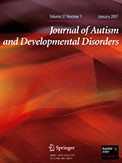Čakrt O, Chovanec M, Funda T, Kalitová P, Betka J, Zvěřina E, Kolář P, Jeřábek J. Eur Arch Otorhinolaryngol. 2010 Sep;267(9):1355–60. IF: 1.165

Abstract:
We analyzed the effect of 2-week individualized visual feedback-based balance training on the postural control of patients undergoing retrosigmoid microsurgical removal of vestibular schwannoma. We performed prospective evaluation of 17 patients allocated into two groups: feedback group (9 patients, mean age 37 years) and standard physiotherapy group (8 patients, mean age 44 years). Patients in both the groups were treated once per day by intensive rehabilitation from 5th to 14th postoperative day. Rehabilitation of patients in the feedback group was performed using the visual feedback and force platform. Results were evaluated on the beginning and at the end of rehabilitation program (e.g. 5th and 14th postoperative day). Outcome measures included posturography during quiet stance under four different conditions by the modified Clinical Test for Sensory Interaction of Balance. Body sway was evaluated from center of foot pressure. Compensation of Center of pressure (CoP) parameters in stance on firm surface was similar in the control and feedback groups. However, in stance on foam surface with eyes closed the patients from the feedback group were better compensated and CoP parameters differed significantly (p < 0.05). This prospective clinical study suggests that specific exercises with visual feedback improve vestibulospinal compensation in patients after vestibular schwannoma surgery and thus can improve their quality of life.
-az-
